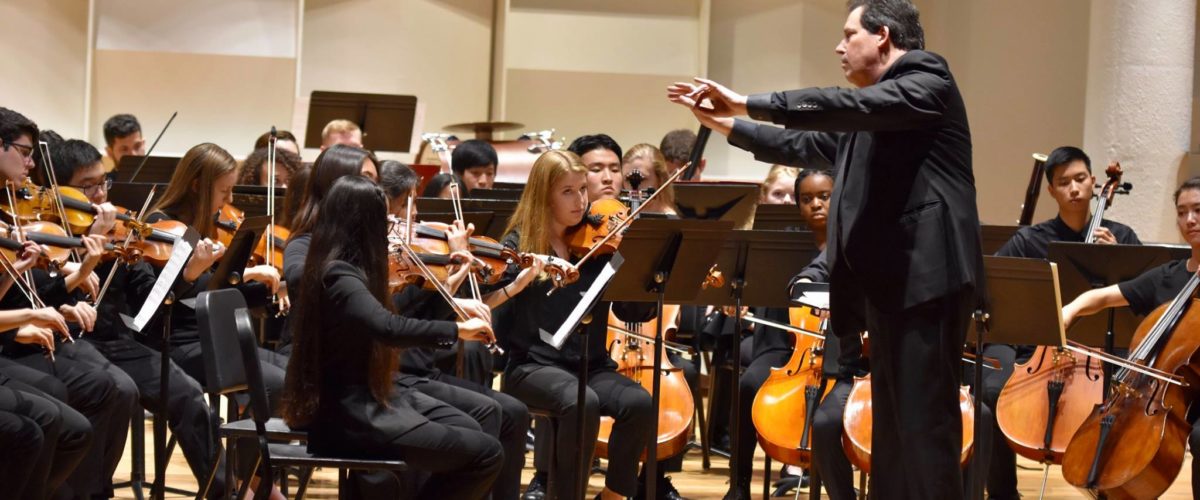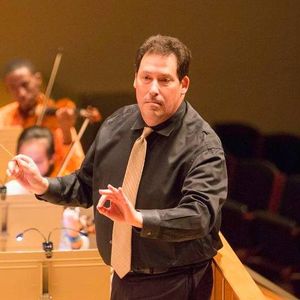All-Campus Orchestra Concert – 10.20.2022
Boston University All-Campus Orchestra
Mark Miller, conductor
Maria Kurochkina, Teaching Assistant
| “L’italiana in Algeri” | Gioachino Rossini (1792-1868) |
| Maria Kurochkina, conductor | |
| Academic Festival Overture | Johannes Brahms (1833-1897) |
| Pavane pour une infante défunte (Pavane for a Dead Princess) |
Joseph-Maurice Ravel (1875-1937) |
| Tales from the Vienna Woods | Johann Strauss II (1825-1899) |
Roster
Boston University All-Campus Orchestra Fall 2022
Violin 1
Sydney Aslan, Political Science, 2026
So Young Bae, Molecular and Cellular Biology
Michelle Bernard, Biology, 2023
Hong Yuan Cao, Economics, 2026
Ella Flister, Political Science, 2026
Amber Hynes, Psychology, 2025
Allison Kim, Biology (Specialization in Cell/Molecular Biology & Genetics), 2023
Blessing Martins, 1st year Graduate Student in Music Education
Ksheeraja Ramanujam, Biomedical Engineering, 2026
Carla Romney, Director of Research, CityLab
Min (Lily) Tang, 2025
Raina Tung, Mechanical Engineering, 2024
Allyson Zheng, Biology, 2024
Violin 2
Lyda Arevalo Gonzalez, Psychology, 2023
Sydney Butler, Health Science, 2024
Jenny Cui, Chemistry, 2026
Jessica Fessmann, Music, 2025
Morgan Hartwell, History, 2026
Nathaniel Lambert, Italian & Linguistics, 2025
Yuqiu (Rachel) Liu, Public Relations, 2023
Sooyeong (Hailey) Na, Business Administration & Management, 2026
Kendall Thomas, English, 2024
Scarlett Wills, Art History, 2026
Tianyue (Shirley) Xia, Accounting & Business Analytics, 2024
Linxuan (Zoey) Zhou, Economics, 2026
Viola
Ryan Appleton, Business Administration & Management, 2026
Wei Qing (Janice) Cheng, Health Studies, 2024
Madelyn Duffy, Biomedical Engineering, 2026
Genevieve Duguid, 2026
Audrey Kirkley, 3rd year Graduate Student
Annalise Kratochwill, Political Science, 2025
You Wu, Psychology, 2025
Cello
Jason Bard, Mechanical Engineering, 2024
Karyna Cheung, Linguistics, 2026
Smith Graninger, Economics, 2026
Sophia Rizzo, English, 2024
Narek Sahakian, English, 2023
Ella Xu, Psychology, 2026
Bass
Ian Fitzsimons, Environmental Analysis & Policy, 2023
David Gardner, Data Science, 2026
Levi Gordon, Biochemistry & Molecular Biology, 2026
Payton Harvill, Astronomy & Physics, 2026
Alice Marchant, Mathematics, 2026
Flute
Julianna Fastiggi, International Relations, 2023
Mary Pyrdol, Graphic Design, 2023
Madison Soares, Psychology, 2025
Oboe
Barrett Schenk, Biomedical Engineering, 2025
Nicholas Ward, Theory & Composition, 2023
Clarinet
Daniel Cho, Data Science, 2025
Brandon Von, Guest
Bassoon
Jeanna Heezen, MS Arts Administration. 2024
Peter Niziolek, Biomedical Engineering, 2026
Horn
Grace Clarke, Guest
Alicia Hamm, Journalism, 2026
Spencer Klein, Guest
Amir Sharipov, Guest
Trumpet
Xan Denker, Guest
Chloe Francis, Guest
David Ortiz, Guest
Trombone
Habeen Chang
Kit Man Kong, Guest
Anderson Warshaw, Guest
Tuba
James Farley, Guest
Harps
Julia Crosson, Music Composition & Theory, 2025
Cecily Zhao, Music Education, 2025
Percussion
Jiahao Fang, Guest
Samuel Hoffacker, Guest
Mariia Kurochkina, Guest
Program Notes
L'italiana in Algeri
“L’italiana in Algeri” (The Italian Girl in Algiers) is the earliest of Gioachino Rossini’s operas to become a lasting part of the repertoires of opera houses to this day, despite the fact that more than 200 years have passed since its first production. Stendhal considered it the highest achievement of the comic “opera-buffa” and gave it an excellent description: “an absolutely organized mess.” It is interesting to note that The Italian in Algiers is the eleventh opera by Rossini, who was only 21 years old at the time of its composing, and the creation of this masterpiece took the composer only 27 days.
The brilliant overture to the opera reveals the typical features of the composer’s style: lightness, grace, and unsurpassed humor.
Academic Festival Overture
By the late 1870s Brahms’ position as a preeminent composer was well recognized. So, in 1879 the University of Breslau in Prussia (now Wrocław, Poland) brought honor to the distinguished composer by awarding him an honorary doctorate. Brahms modestly sent a letter of thanks to the university – and composed his Academic Festival Overture, one of his only two works in that genre. Rather than a concert overture worked out with original themes, perhaps in the manner of a first movement of one of his imposing symphonies, he chose to surprise everyone with a lighthearted mélange of traditional student drinking songs.
While most of the tunes are unknown to contemporary American audiences, the swirling, magisterial last section is based upon the universally familiar Gaudeamus igitur, some people today may also recognize bits of the famous Rákóczi March. But to their delight, the German university audience at the time would have recognized all the songs that Brahms quoted or alluded to. At the same time, the form is as tight, clear, and developmental as you could ask of this skilled structuralist of musical logic. It takes a master to serve up something ostensibly light, but which takes its place among the most revered of concert masterpieces.
–Wm. E. Runyan
Pavane pour une infante défunte (Pavane for a Dead Princess)
Pavane, originally written as a piano piece, proved immensely popular leading to
Ravel to create an orchestral version in 1910. Ironically, Ravel became widely known by a piece that is atypical of his style. Many composers grow to resent certain of their creations that become so popular as to overshadow others of their efforts that they consider more deserving, and so it was with Ravel and his Pavane.
But music-lovers have resolutely ignored the composer’s protestation—as did he, one might add, since he deigned to make a Duo-Art piano-roll recording of it himself in 1922. Pavane pour une infante défunte remains one of those pieces that everybody recognizes instantly. It encapsulates an emotional coolness, a restrained melancholy, and a mysterious timelessness that lends it a unique personality.
James M. Keller
Tales from the Vienna Woods
Tales from the Vienna Woods is a waltz by Johann Strauss (son). It was premiered on June 19, 1868 at a “novelty festival with fireworks” for the benefit of Josef and Eduard Strauss in the Volksgarten by the Strauss Orchestra conducted by Johann Strauss. The interpreter of the zither solo was Anton J. Paschinger.
The piece is a succession of five waltzes, with the zither as the featured solo instrument in the introduction and coda. At the time of its creation, the waltz had long since risen from a disreputable village dance to a highly respected ballroom dance. The naming was intended to commemorate the origin of the dance from the folk music of the Vienna Woods. In waltz II/1, Johann Strauss recalls the motif of his father’s waltz Die Swallows (waltz III/1 there).
Biographies
in alphabetical order

